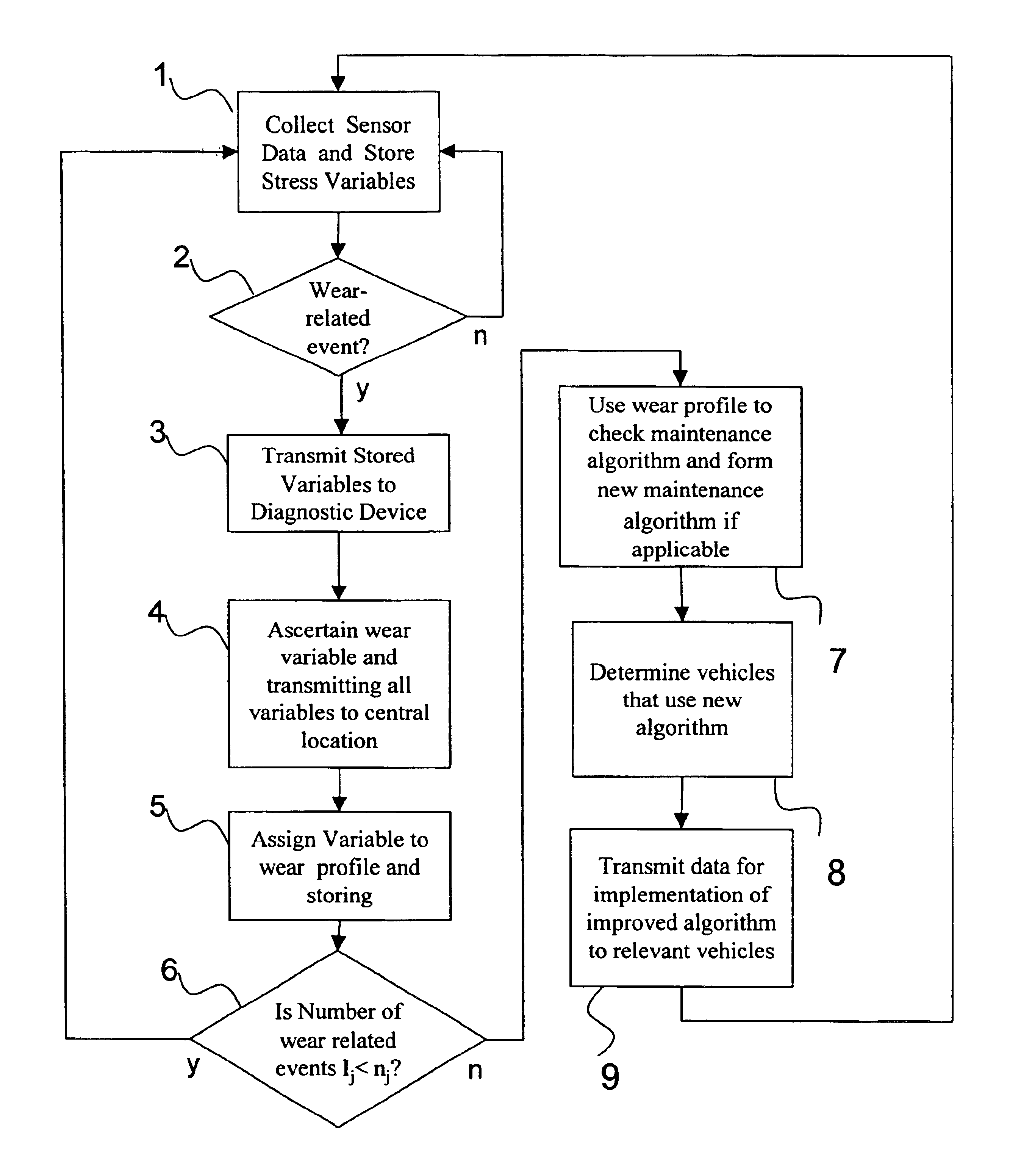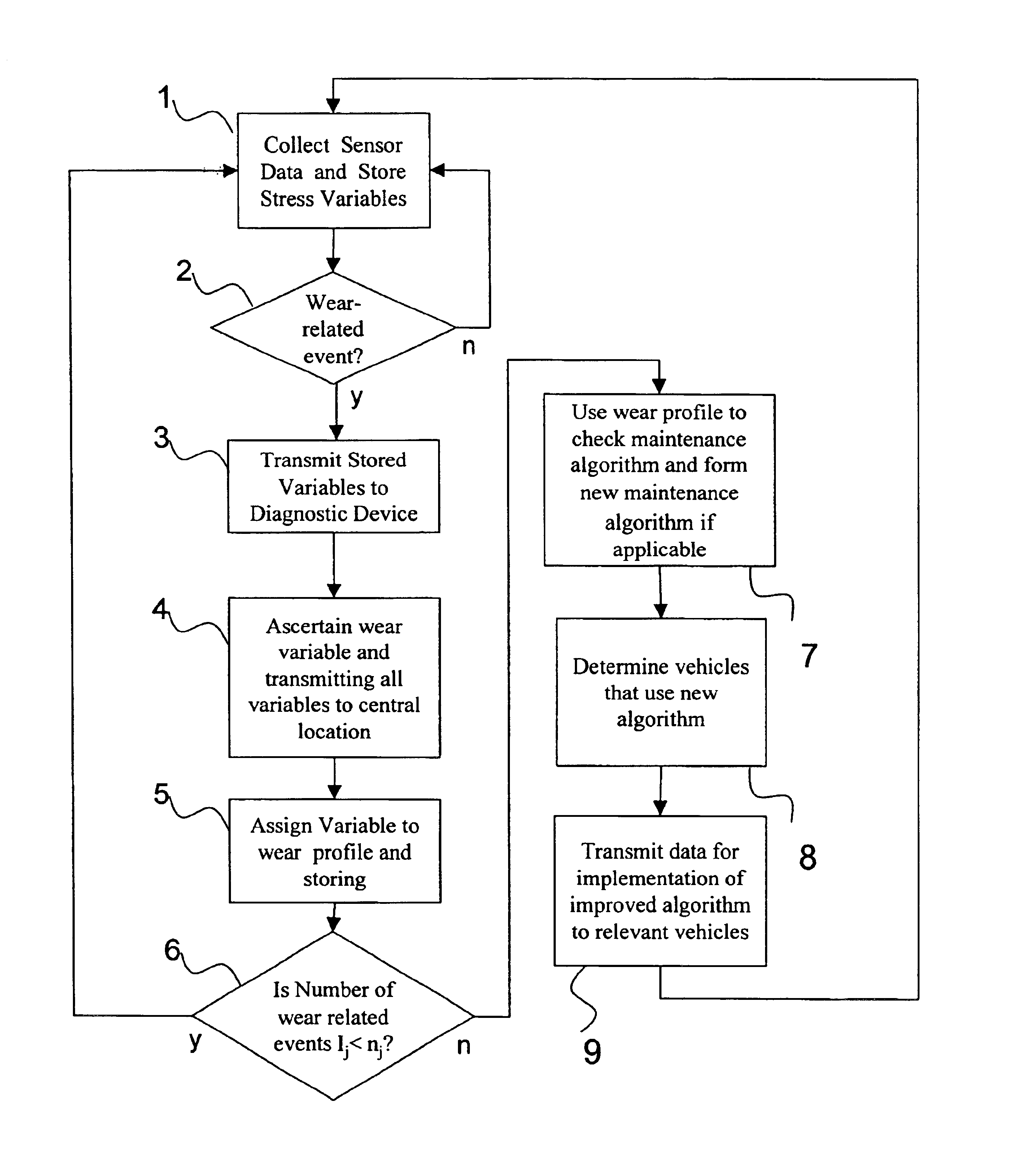Method for creating a maintenance algorithm
a technology for maintenance or service algorithms, applied in the direction of instruments, nuclear elements, data acquisition and logging, etc., can solve the problem of not giving any indication of how to optimize maintenance or diagnostic algorithms, and achieve the effect of reducing the waiting time for vehicles and improving product quality
- Summary
- Abstract
- Description
- Claims
- Application Information
AI Technical Summary
Benefits of technology
Problems solved by technology
Method used
Image
Examples
Embodiment Construction
In vehicles that have been prepared for the execution of the method (fleet vehicles), in Step 1 sensor data are continuously detected in the vehicle. Stress variables are derived from the sensor data and stored in a memory. In Step 2, if a wear-related event occurs in a vehicle, that is, a component breaks down or it is detected electronically that a predetermined wear limit has been reached in a component, the procedure branches to Step 3. If this is not the case, the stress variables continue to be stored in Step 1.
Following a wear-related event, the stored stress variables are transmitted to a diagnostic device in a repair shop in Step 3. This is effected, for example, within the framework of a repair or servicing necessitated by the wear-related event. In Step 4, the wear variables are additionally ascertained in the repair shop and transmitted, with the stress variables, to a central location. In addition to the wear and stress variables, configuration and / or type data for the ...
PUM
 Login to View More
Login to View More Abstract
Description
Claims
Application Information
 Login to View More
Login to View More - R&D
- Intellectual Property
- Life Sciences
- Materials
- Tech Scout
- Unparalleled Data Quality
- Higher Quality Content
- 60% Fewer Hallucinations
Browse by: Latest US Patents, China's latest patents, Technical Efficacy Thesaurus, Application Domain, Technology Topic, Popular Technical Reports.
© 2025 PatSnap. All rights reserved.Legal|Privacy policy|Modern Slavery Act Transparency Statement|Sitemap|About US| Contact US: help@patsnap.com


